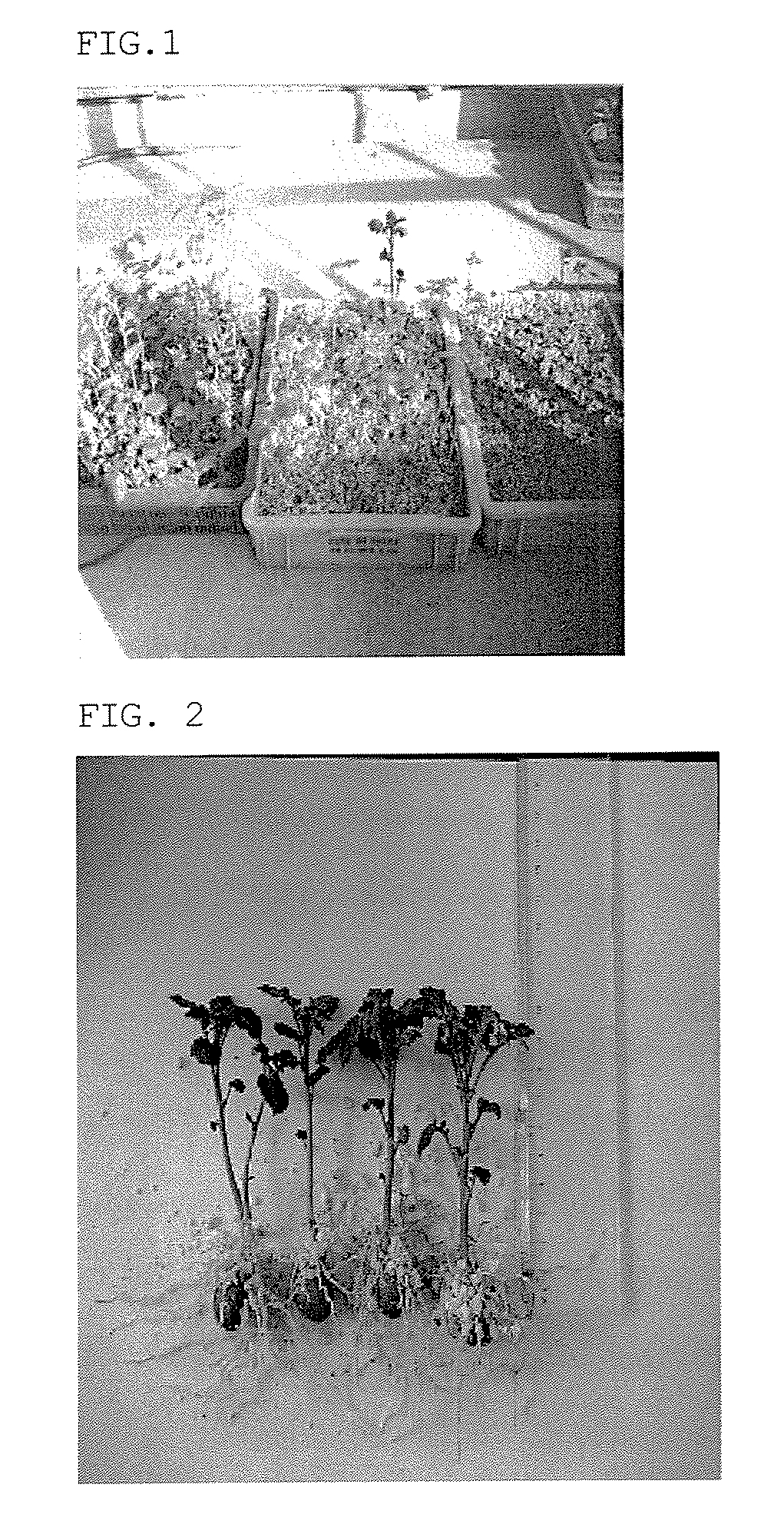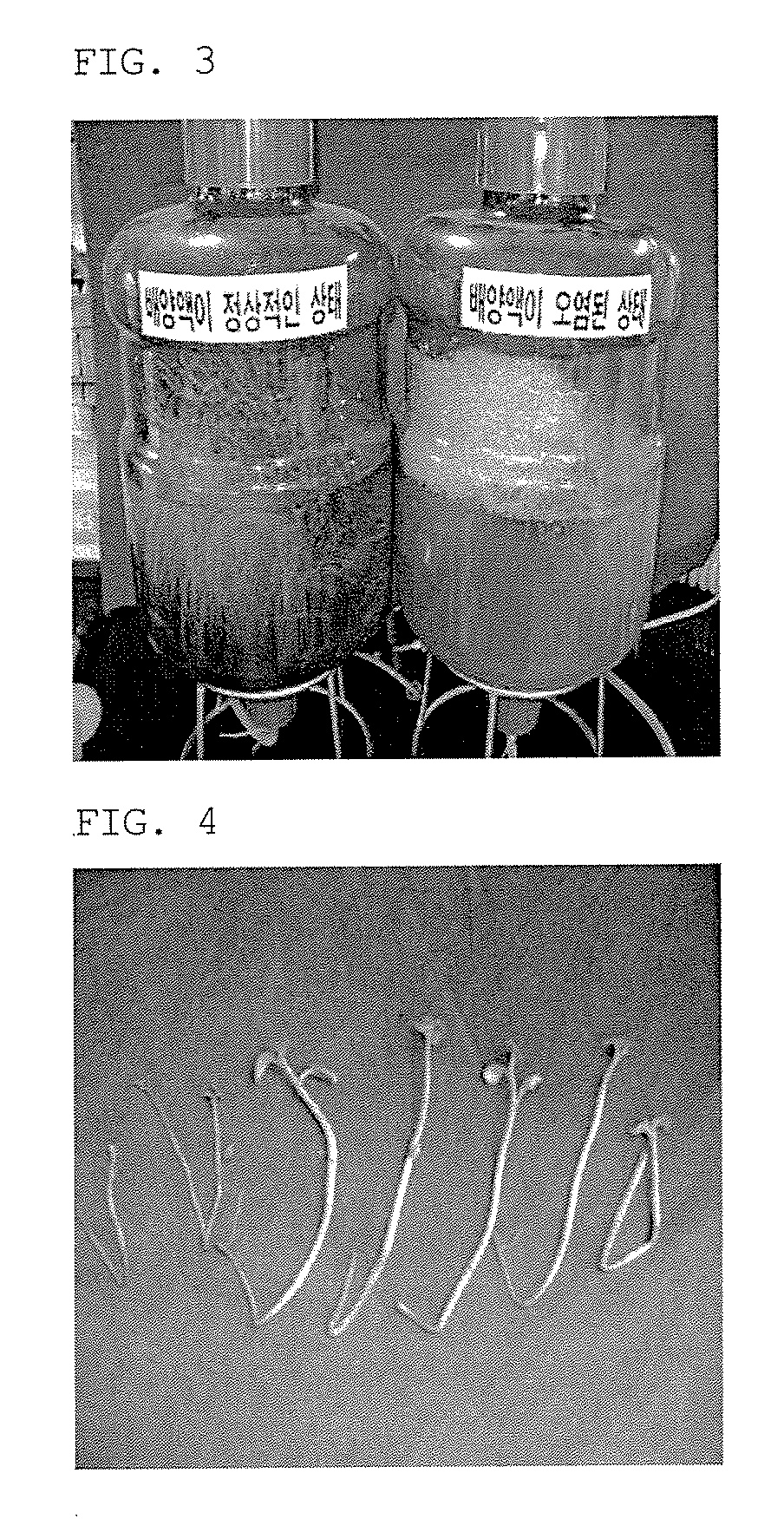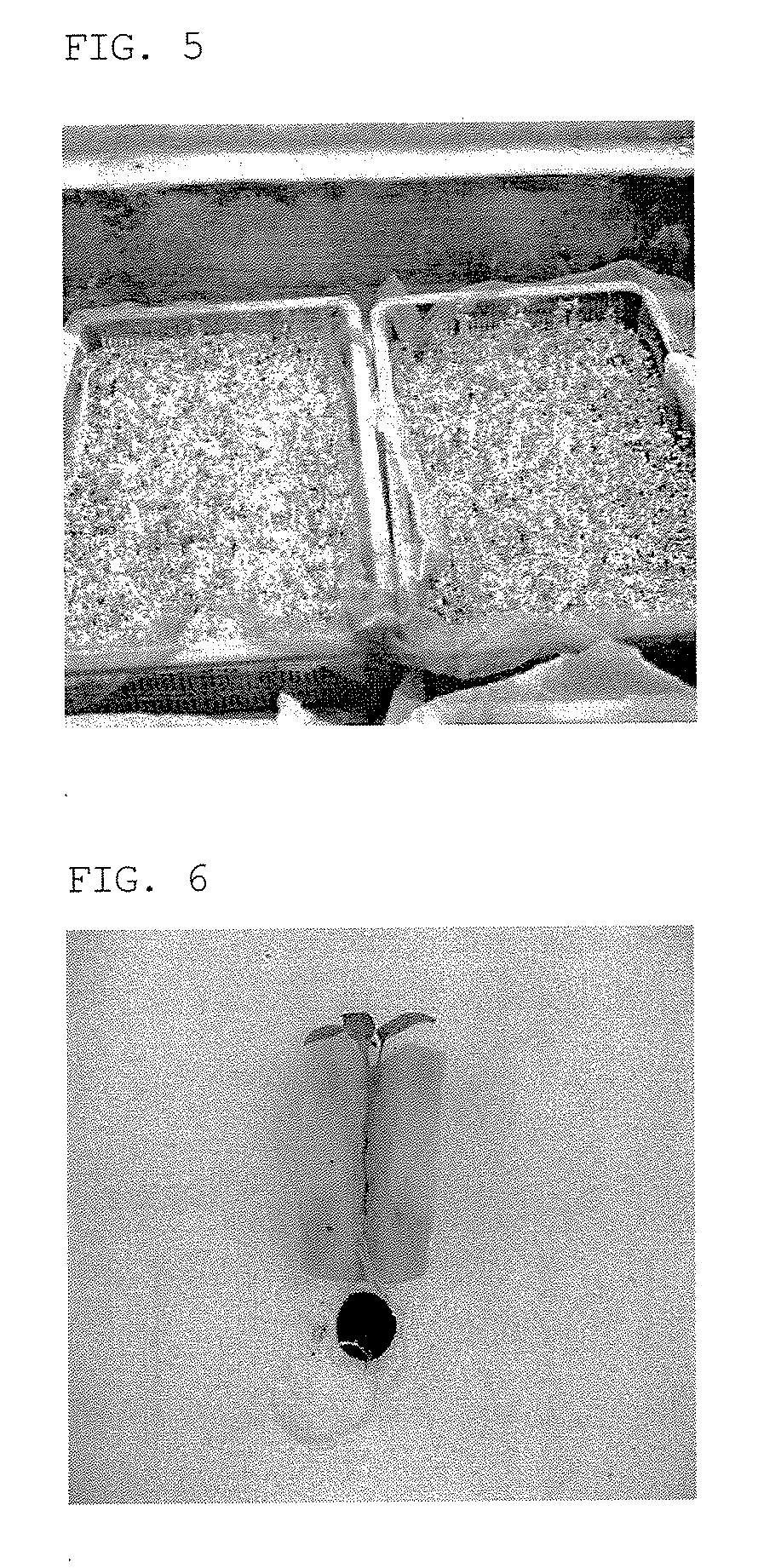Mass-production method for seedling of seed potato
a potato seedling and production method technology, applied in soil-working methods, agriculture tools and machines, plant tissue culture, etc., can solve the problems of losing the value of potato seedlings, tissue-cultured seedlings, and mainly withering and dying, and achieve the effect of maximizing the number of stolons
- Summary
- Abstract
- Description
- Claims
- Application Information
AI Technical Summary
Benefits of technology
Problems solved by technology
Method used
Image
Examples
example 1
Production of Potato Seedlings
[0154] 1. Collection of Growing Points from Seed Potatoes and Liquid Culture
[0155] Disease-free seed potatoes were selected from a known potato cultivar. They were grown under semi-shaded diffused light until potato eyes (sprouts) thereof were about 0.5 cm, or were potted in sterile perlite about two times as deep as the size of the potatoes. Herein, the seed potatoes were isolated from contaminants, including insect vectors such as mites, using a 540 mesh.
[0156] One node at an upper part of the stem of the illuminated seed potatoes, which has growing points of eyes or sprouts, was treated with one or two drops of Tween-20 as a surfactant, sufficiently rinsed with running water, placed into a container having a lid, and transferred to a clean bench.
[0157] The rinsed node was surface-disinfected with 70-75% ethanol for 30 sec, and rinsed with sterile water two or three times. The node was surface-disinfected with 2% hypochlorite for 5-10 min, and rin...
example 2
Production of Seed Potatoes
[0169] The potato seedlings having a plant length of 35 cm, prepared in Example 1, were planted in hydroponic facilities. The potato seedlings were cultivated at 21° C. using a nutrient solution of pH 6.8. The nutrient solution sprayed onto the potato seedlings was supplied for 30 sec, and the supply of the nutrient solution was interrupted for 4 min. The supply and interruption thereof of the nutrient solution were repeatedly alternated. When the above-ground portion of the potato seedlings had grown to about 10 cm in length, the lower leaves, but not the three uppermost leaves, were removed with disinfected scissors, and stem descending work was carried out three times by descending the stems of potato seedlings below the culture panel. Thereafter, potato minitubers were repeatedly collected.
PUM
 Login to View More
Login to View More Abstract
Description
Claims
Application Information
 Login to View More
Login to View More - R&D
- Intellectual Property
- Life Sciences
- Materials
- Tech Scout
- Unparalleled Data Quality
- Higher Quality Content
- 60% Fewer Hallucinations
Browse by: Latest US Patents, China's latest patents, Technical Efficacy Thesaurus, Application Domain, Technology Topic, Popular Technical Reports.
© 2025 PatSnap. All rights reserved.Legal|Privacy policy|Modern Slavery Act Transparency Statement|Sitemap|About US| Contact US: help@patsnap.com



